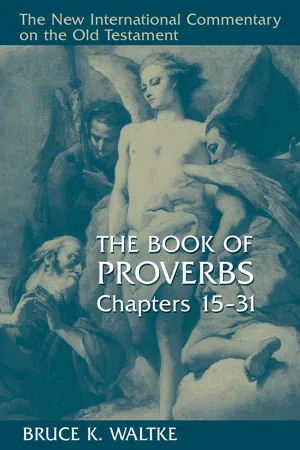For the unity, integrity and structure of Collection V see p. I:25.
The editorial prose superscription of 25:1 marks off Collection V. This second collection of Solomon’s proverbs, like “Further Sayings of the Wise” (see 24:23), also conforms to Kitchen’s label, Type A (see I: 32).
For an analysis of Solomon II into Solomon IIC and Solomon IID see p. I:15–16.
2The glory of God is to hide10 a matter;
but the glory of kings is to search out a matter.
3As for the heavens with reference to11 height,
and the earth with reference to the depth,
and the heart of kings, there is no searching out [of them].
4Remove dross from silver,
and a vessel comes forth for the silversmith.12
5Remove a wicked official before a king,
that13 his throne may be established by righteousness.
6Do not honor yourself before a king,
and in the place of great people do not stand.
7Better one says14 to you, “Come up here,”
than one humiliate you before a noble.
What your eyes have seen,15
8do not bring16 hastily17 to trial.18
Lest,19—what20 will you do in the end,
when your peer puts you to shame.21
9Plead your case with your peer,
but do not divulge a confidence;
10lest a judge will pronounce you guilty,
and the accusation against you will never depart.22
11Apples23 of gold in a silver sculpture,
is a decision made appropriate its to its circumstance.24
12A gold earring, even an ornament of fine gold,
is a wise25 arbitrator’s rebuke26 “upon” a listening ear.
13Like the coolness27 of snow at the time28 of harvest
is a trustworthy messenger to him who sends him;
he refreshes his master.29
14Clouds and wind and30 and no rain31
is a man who boasts of a gift he does not give.
15Through patience a ruler is persuaded,32
and a soft tongue shatters33 a bone.
16[If] you have found honey, eat what you require,
lest you have more than enough of it and vomit it.
17Make your foot scarce [and turn away] from your neighbor’s
house,
lest he have more than enough of you and hate you.
18A war-club,34 and a sword, and a sharpened arrow
is a man who testifies against his neighbor as a false witness.
19A decaying35 tooth and a turned36 foot,
is reliance37 on38 a treacherous person in the time of adversity.
20One who puts off39 a garment on a cold day,
[one who pours]40 vinegar on a wound,41
and one who sings songs42 to a heavy heart.43
21If the one who hates you is hungry, give him food to eat,
and if he is thirsty, give him water to drink.
22for burning coals you are taking [and heaping] upon his head,
and the LORD will repay you.
23Like a north44 wind that brings forth rain,
a sly45 tongue, a face46 struck by a curse.47
24Better is dwelling on a corner of a roof,
than ‘in’ a house shared with a contentious48 wife.49
25Cold water to a weary person,50
and a good report from a distant land.
26A muddied spring, a ruined fountain,
a righteous person who sways before the wicked.
27To eat honey excessively51 is not good;
nor is it honorable to search out a weighty matter.52
28A breached city, which has no wall,
a person whose spirit has no restraint.53
The introduction to the composition, which consists of the two proverb pairs (vv. 2–3, 4–5), presents the composition’s two themes that set the parameters of meaning within which all its saying are to be interpreted. Verses 2–3 establish the God-king-subject hierarchy, and verses 4–5 posit the fundamental conflict between the righteous and wicked that permeates every area of human life. The first half of the body (vv. 6–15) pertains to the first theme, and second half (vv. 16–27) to the second theme. Each half ends with a unique single line proverb (vv. 15 and 27). Moreover, the third verse from the end of each section (vv. 13 and 25) uses the imagery of refreshing coolness for the positive effect a message has upon a person Heb. npš). Van Leeuwen also observed the matching of positive (+) and negative (-) Sayings (S) and admonitions (A). in the body of the two halves. In sum, he analyzes the composition as follows:
